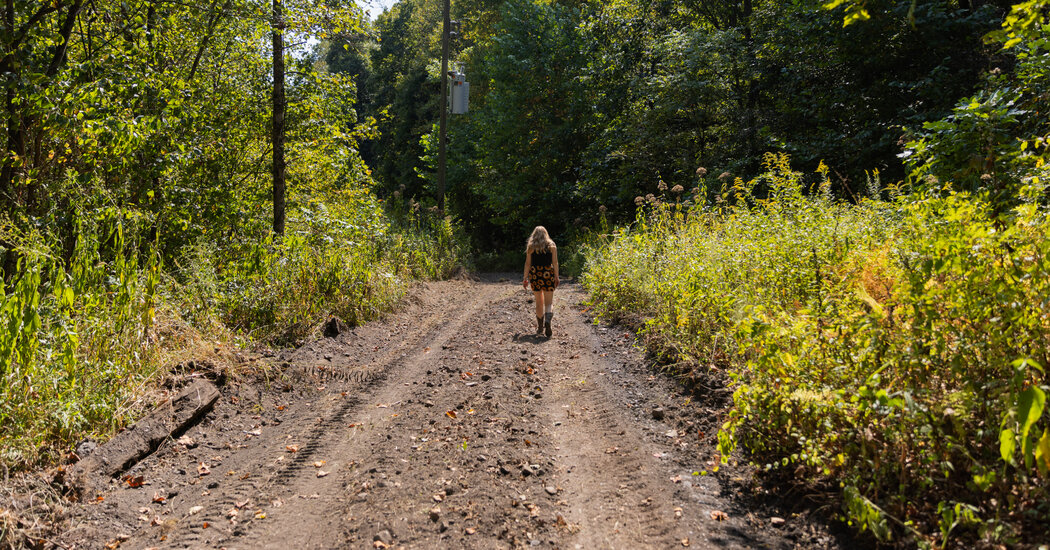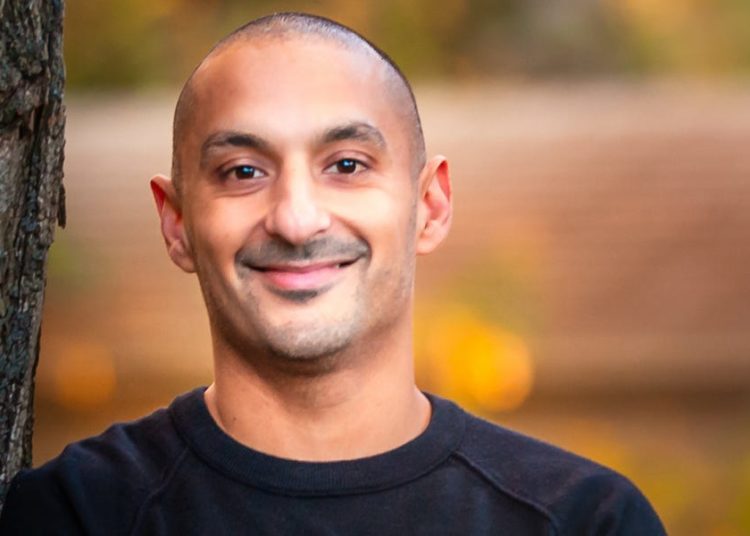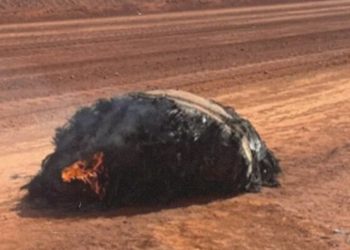In the spring of 2010, the photographer Maddie McGarvey pulled up to a trailer in a blink-and-you’ll-miss-it Appalachian town. At the time, Ms. McGarvey was a college sophomore at Ohio University who wanted to document grandparents raising their grandchildren — a situation that the opioid epidemic, having broken so many families, made all too common.
Her project had taken her away from the manicured lawns of campus and into a nearby hollow, where old houses and trailers perched on a hill beside a creek — far from cell towers, jobs and opportunity. A social worker had given her the phone number and address of a family willing to be photographed.
When Ms. McGarvey arrived, she saw the 3-year-old Paige Casto and her siblings running through the yard. She had no inkling that she would return to this place dozens of times in the next 15 years.
She would form a particular bond with Paige, who was a compassionate, curious child. The two searched for wild daffodils and scoured shallow ponds for turtles, Paige’s favorite animal. When Paige got tired of walking down the gravel roads on her bare feet, Ms. McGarvey would carry Paige on her hip.
Today, the toddler who ran playfully through Ms. McGarvey’s photographs is a high school graduate facing an uncertain future. Through her childhood and adolescence, Paige raised herself and took care of her younger brothers while her family moved frequently between small coal towns, without a stable place to land.
When I saw Ms. McGarvey’s project, I felt an immediate connection to Paige. As a teen I spent time in foster care and bounced between sleeping on friends’ sofas, in my car or in a shelter. The details in the photographs transported me back to that turbulent period: the detritus piled on the broken stovetop; the hours hanging out at McDonald’s; the world dissolving into weariness before you’re even old enough to drive.
Most of all, I recognized Ms. McGarvey’s project as an act of witnessing, documenting one family’s life in its daily tenderness, ordinary suffering and full complexity.
With the Castos, Ms. McGarvey found a family strained by difficult circumstances. Paige’s mom had abusive boyfriends and neglected her children. Paige’s grandparents, Lorrie and Lee, took in Paige and her siblings while their own youngest child was graduating high school. Lorrie and Lee had health problems, and there was never enough money. But with help from neighbors, food stamps, Medicaid and Lee’s Air Force veteran benefits, they kept the family together. “They took care of each other. They got through hard stuff,” Ms. McGarvey said.
A few years ago, Lee Casto died. Lorrie became unmoored in her grief; she was also going blind from a degenerative condition and in constant pain, waiting for stomach surgery. The family lost their Veterans Affairs housing benefits and then their home. They shuffled between a camper and a relative’s one-bedroom apartment. Paige and her brother took care of their youngest sibling, giving baths and scrounging up dinners. On the night the family imploded and Paige’s brothers went to foster care, Paige called Ms. McGarvey.
Reflecting on her time with the Castos, Ms. McGarvey said, “It was impossible not to feel close to them.” In her role as photographer, she became the person who made the Castos less isolated. Through her attention, she was helping them understand how their struggles were connected to the larger world.
When I was 14 years old and living in a facility for troubled teens, I asked my social worker if she could find someone to help me write poetry, certain nothing would come of it. Amazingly, she found a woman through a county mentorship program. My mentor wasn’t a poet — in fact, she seemed to hate art — but she was allowed to take me outside, so we walked loops around a nearby park and went to restaurants where I clutched the menu, terrified, afraid to cost her money. After I went into foster care, my mentor kept coming. Month by month, we went on our awkward visits, and she became the most stable, consistent adult in my life.
I grew up 900 miles from Paige in Minnesota, a state with generous social services. My mentor, an immigrant with two doctoral degrees, pushed me to dream bigger and helped me navigate financial aid; eventually, I went to college. Ms. McGarvey told me that Paige’s future is “a lot of question marks.” Almost no one around Paige attends college. She doesn’t have time to think about scholarships, Ms. McGarvey explained. “She’s just trying to survive day to day and figure out how to go from Point A to Point B.”
“My dreams are to have an at-home day care,” Paige told me. She wants to be a stable role model for kids who are going through a difficult time and support parents by enabling them to work — or just take a much-needed break.
Over the years, Ms. McGarvey began to see the systems that constrain the lives of the Castos. “It’s not even just the lack of resources — it’s the pain all over your body from working laborious jobs at minimum wage for years and chasing little kids way past your prime,” she said. She understands that people don’t just get “stuck.” They fight to stay afloat while the world tries to push them under, asking themselves daily: Where will I sleep? How will I get to work? What can I cook tonight with a microwave?
Ms. McGarvey loses sleep worrying about Paige and her family. She struggles to separate her role as a documentarian from that of a confidant, advocate or, as Paige says, “big sister.” This duality is ethically and emotionally complex. “Ultimately, I’ve found my role as a photographer becomes not just to see, but to stay,” Ms. McGarvey said. “And by staying, to honor the fullness of a life that many might otherwise overlook.”
This summer, Paige got engaged to her high school boyfriend. They moved yet again for his factory job and now live with her aunt. Paige will be 19 when they marry in the spring, and she can’t wait to start her own family. She told me how important Ms. McGarvey’s presence has been during the difficult times. When you are a child, it’s hard to see the broader forces that have shaped how much food you have to eat and whether you’ll be separated from your siblings. Paige can look back at the photographs and make sense of her family’s life and her own, “now that we’re grown and we understand,” she says.
Like Paige, I don’t know where I would be without my witnesses, without the people who saw me at my lowest moments and later gave me context. Yes, it was that bad. No, I didn’t deserve it. All those people who were there and couldn’t save me but did not look away.
Maddie McGarvey is a documentary photographer based in Columbus, Ohio. Her work often examines Appalachia, rural America, poverty, grief, resilience and how policy affects those living in the United States. Emi Nietfeld is a journalist who writes about inequality and families and the author of the memoir “Acceptance.”
The Times is committed to publishing a diversity of letters to the editor. We’d like to hear what you think about this or any of our articles. Here are some tips. And here’s our email: [email protected].
Follow the New York Times Opinion section on Facebook, Instagram, TikTok, Bluesky, WhatsApp and Threads.
The post Seeing Those Who Are Forgotten: An Act of Witness in Appalachia appeared first on New York Times.




